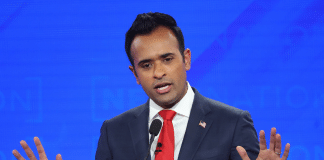As President Donald Trump concludes his first month back in office, recent polls reveal a complex picture of public opinion regarding his performance. A Gallup poll indicates a slight decline in approval, from 47% in late January to 45% by mid-February 2025. This figure is notably 15 points below the historical average for presidents at this stage in their first terms since 1953. The same poll highlights that a majority of Americans disapprove of Trump’s handling of the economy (54%) and foreign trade (53%).
Despite these challenges, President Trump maintains robust support within his party. The Gallup survey reports a 93% approval rating among Republicans, contrasted with a mere 4% approval from Democrats. Independent voters show a 37% approval rating for the President, reflecting the continued political polarization in the country.
Economic concerns are a key factor influencing approval ratings. In response to rising prices, President Trump acknowledged the resurgence of inflation during a recent interview, attributing it to the policies of the previous administration. The U.S. Bureau of Labor Statistics has reported a slight uptick in inflation early this year, with notable increases in the costs of car insurance, used cars, healthcare, internet and phone services, and airline tickets. The administration has promised aggressive action to combat inflation, including potential tariffs on foreign goods and deregulation to stimulate domestic production.
In contrast to Gallup’s findings, a CBS News/YouGov poll conducted from February 5–7, 2025, shows President Trump reaching a career-high approval rating of 53% among adults. This suggests that public opinion may vary depending on the polling source and methodology. Some analysts note that polls taken before major policy actions often fail to capture shifts in public sentiment once the effects of new policies take hold.
The President’s active approach in his initial weeks is evident, with nearly 70 executive orders signed since his inauguration. This pace surpasses that of recent predecessors and underscores his commitment to swiftly implementing his policy agenda. These orders have included measures on border security, energy independence, and reversing progressive policies on gender ideology in federal agencies.
Trump’s approval ratings are also influenced by his foreign policy decisions. His administration has taken a tough stance on China, reimposed sanctions on Iran, and reinforced alliances with conservative-leaning governments in Europe. His handling of the ongoing Israel-Gaza conflict has also garnered mixed reactions, with strong support from pro-Israel conservatives but criticism from progressive activists.
Public perception of Trump’s leadership will likely continue to evolve as his policies take effect. Key factors to watch include the administration’s success in lowering inflation, securing the border, and advancing economic growth. The coming months will determine whether Trump’s approval ratings stabilize, improve, or decline further as voters assess the tangible impact of his presidency.



